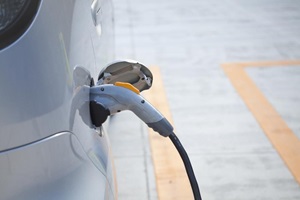- EV Group Buys
- Nissan LEAF
- Consumer Preferences
- Transportation Efficiencies
Alternative Sales Channels Look to Avoid EV Dealer Woes

EV sales in the United States continued to climb to new heights in July, and market participants generally agree the growth is despite (not because of) the consumer experience at dealerships. Sales of plug-in hybrids are up a whopping 68% over last July, while battery EV sales are up nearly 51%. This is remarkable considering gasoline is cheaper by 43 cents per gallon than a year ago.
Many consumers have reported that trying to buy an EV is about as enjoyable as a root canal, with many dealers underinformed on charging requirements, local incentives, and even basic EV operating requirements. This frustration goes back than more than 20 years according to EV marketing guru Chelsea Sexton, who worked on GM’s EV1.
“There's no question that dealers are one of the larger hurdles facing EVs, and that too many automakers are in denial…,” said Sexton, adding, “the only way to improve things is to start with acknowledging things need improving.”
Californian Oasis
The Sierra Club sent volunteers to California and nine other states with zero emission vehicle (ZEV) mandates and published a report highlighting the challenges in the EV buying experience. The report noted significant differences in dealer support for EVs between the oasis that is California and the rest of the country. According to the Sierra Club, dealers representing car companies with EVs in the ZEV states were 2.5 times more likely not to have an EV on the lot than in California and to have only half as many EVs available to buy per dealership. These figures are likely much worse in the other 40 states, where it’s often easier to find a cheap seat to Hamilton than it is to find an EV.
According to the Sierra Club report, the most enjoyable place to learn about buying an EV isn’t at a dealership—it’s at one of Tesla Motors’ growing roster of customer experience centers, which scored much higher in the EV buying experience. Guidehouse Insights’ Electric Vehicle Geographic Forecasts report expects that California will be home to 48% of all EVs on the road in the United States in 2016, which is partly due to much greater vehicle availability at dealerships.
A More Positive Experience
Reborn EV startup Karma is setting up a network of eight independent dealers and a flagship customer center. Following Tesla’s lead, Canadian company is looking to create a more positive EV experience by selling EVs from multiple manufacturers through a specialized dealer network. Perhaps it will become the Uber of carselling by turning an often-frustrating consumer experience into a less expensive and more enjoyable time.
Two other approaches to jump-start EV sales with minimal dealer assistance include group buys and putting EVs in ridesharing fleets. Group buy programs, which aggregate companies’ and individuals’ EV purchases and offer a steep discount, have worked well in Northern Colorado for Nissan, tripling EV sales above the national average. A similar program being put together in Montreal has seen more than 2,800 sign up to purchase a LEAF, well ahead of the entire country’s annual LEAF sales.
GM has decided to put many of the first Chevrolet Bolts manufactured into the Lyft rideshare fleet. The thought is that Lyft, in which GM has invested, will greatly expand the number of consumers who are familiar with the Bolt beyond what can be accomplished by dealers. As my colleague Sam Abuelsamid recently wrote, “Getting people to ride in Bolts with Lyft drivers has the potential to provide positive first-hand exposure without having to go to a dealer first.”
Rather than running around the long-standing dealer problem, automakers need to tackle the issue head-on by greatly enhancing dealer education and providing sufficient incentives to make it just as lucrative to sell an EV.